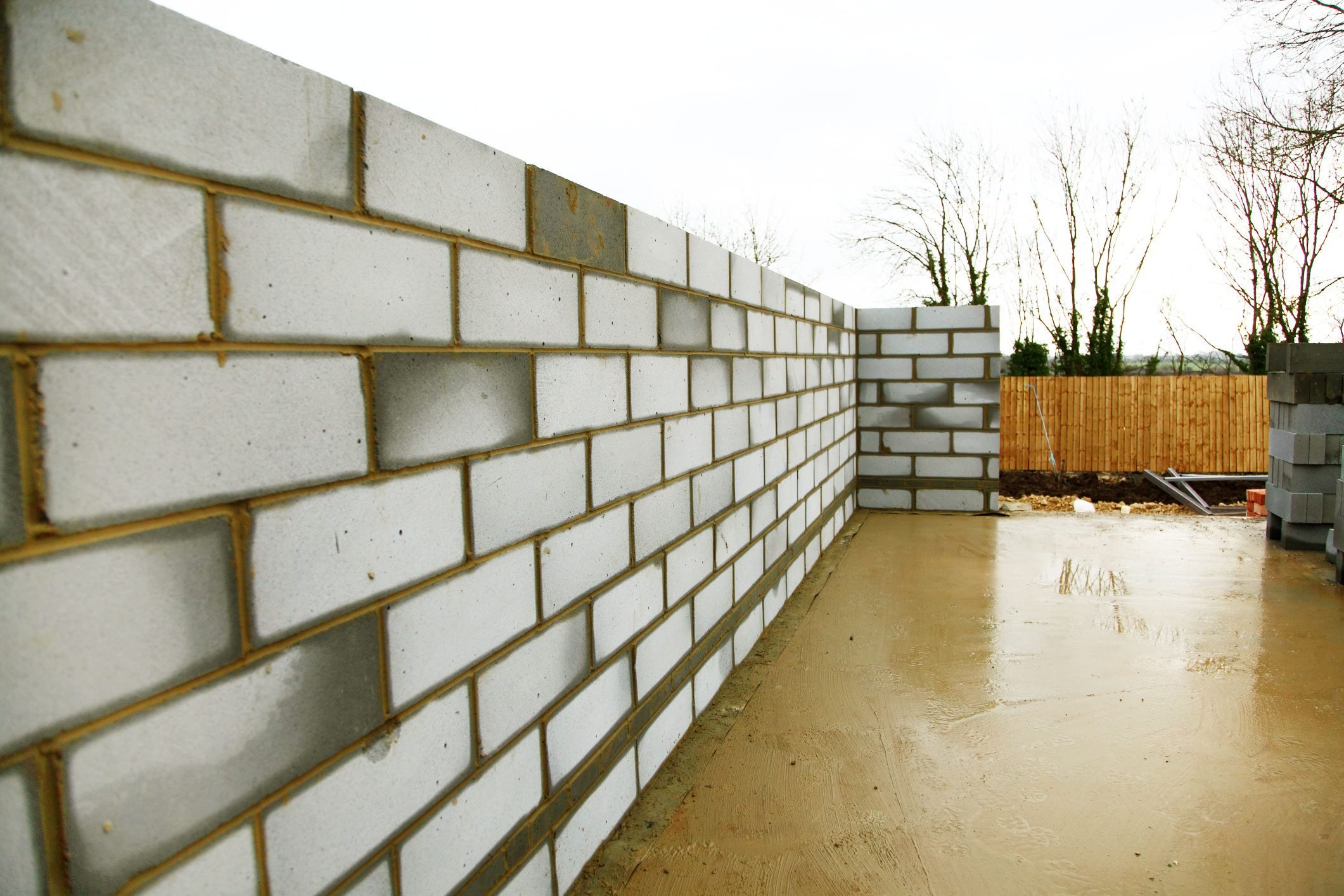Interested in upgrading your yard with a cinder block fence? We can explain the difference between cinder and concrete block and how much they cost.

How Much Does a Cinder Block Fence Cost?

True cinder blocks are vestiges of an era when coal burning was inefficient and waste cinders were plentiful.
In 1913, a Pittsburgh brick mason named Francis Straub perfected a method of combining those cinders with cement to form building blocks that were lighter and offered better insulation than blocks made from concrete.
Straub’s patented cinder blocks were so porous you could drive a nail through them, and he used this to search for cases of patent infringement in competitor’s products. He would visit a construction site and try to pound a nail through one of the blocks. If he could, he sued for royalties.
Cinder blocks haven’t been mass-produced with coal ash for many years. Most of the ones you find today combine concrete with volcanic pumice. They aren’t as strong as concrete blocks, but they’re easier to handle and perfect for garden and yard fences that aren’t too high.
They aren’t as readily available as concrete blocks, though. So if you’re planning to build a block fence, you may opt for slightly less expensive concrete blocks instead. Expect to pay $9 to $12 per square foot, so a six-foot fence should cost $54 to $72 per linear foot.
Cinder Block Fence Cost Factors
Many factors go into the cost of a cinder block fence, just like any other type of fence. They include:
- Mapping property lines: If you build around the perimeter of your land, know where the property lines are to avoid encroaching on your neighbor. The cost to hire a surveyor can be between $300 and $700.
- Permits: Some communities require a building permit to erect a fence, costing from $75 to $200.
- Demolition of existing fence: Plan on spending $1 to $2 per linear foot for demolition if you don’t DIY.
Other costs specific to building a cinder block fence include:
- Type of blocks: Cinder blocks are hollow, typically measuring 8-in. by 8-in. by 16-in., costing $2.50 to $3 per block. Comparable concrete blocks are a little less expensive, $2 to $2.50 each. You can also go with split-faced blocks to add character, running $2.50 to $3.50 each.
- Footing: Standard concrete footing rises to ground level. Something more decorative, like a raised footing with a stone veneer, costs more.
- Terrain: Building a cinder block fence on rough terrain is more difficult and takes more time than on flat ground.
- Labor: This usually runs $30 to $50 per hour depending on location. Labor costs more in large metropolitan areas, especially on the coasts.
What’s the Difference Between Concrete Blocks and Cinder Blocks?
Both are made with Portland cement, with the difference in the type of aggregate. Concrete block aggregate is typically a mixture of sand and gravel. In cinder blocks, these materials are combined with a lightweight material like cinder or volcanic pumice. That leads to the following differences between products:
- Cinder blocks are slightly more expensive.
- Cinder blocks don’t have as much structural strength as concrete, and some building codes prohibit them for structural use. If you’re building a wall more than seven feet high, it’s safer to use concrete blocks.
- Cinder blocks are easier to carry and place, a benefit for the workers building the wall.
You can combine cinder and concrete blocks in the same structure, taking advantage of the qualities of both types.
Which Is Cheaper: Poured Concrete Wall or Block Wall?
A structural cinder block wall for a building foundation generally costs 20 percent more than a poured concrete wall. If it’s properly reinforced, it can also be a lot stronger.
Proper reinforcement includes steel rebar that extends through the hollow cores of the blocks from the footing to the top. The cores should be completely filled with concrete that includes pea-sized aggregate.
When you’re building a small garden fence, you don’t generally need this level of stability. So the cost difference between pouring a wall and constructing a block wall isn’t as great, and could even be roughly the same.
DIY vs. Hiring Pros
Building a cinder block fence can be a DIY-friendly project. If you simply want a two- or three-foot fence around your garden and you have basic masonry skills, there’s no need to hire a pro.
However, if you’re planning a long or high fence on uneven terrain, consider professional installation. A pro has the equipment for proper grading, the knowledge and experience to tell which drainage methods to use, and the skill to properly reinforce the wall to make it last.




















